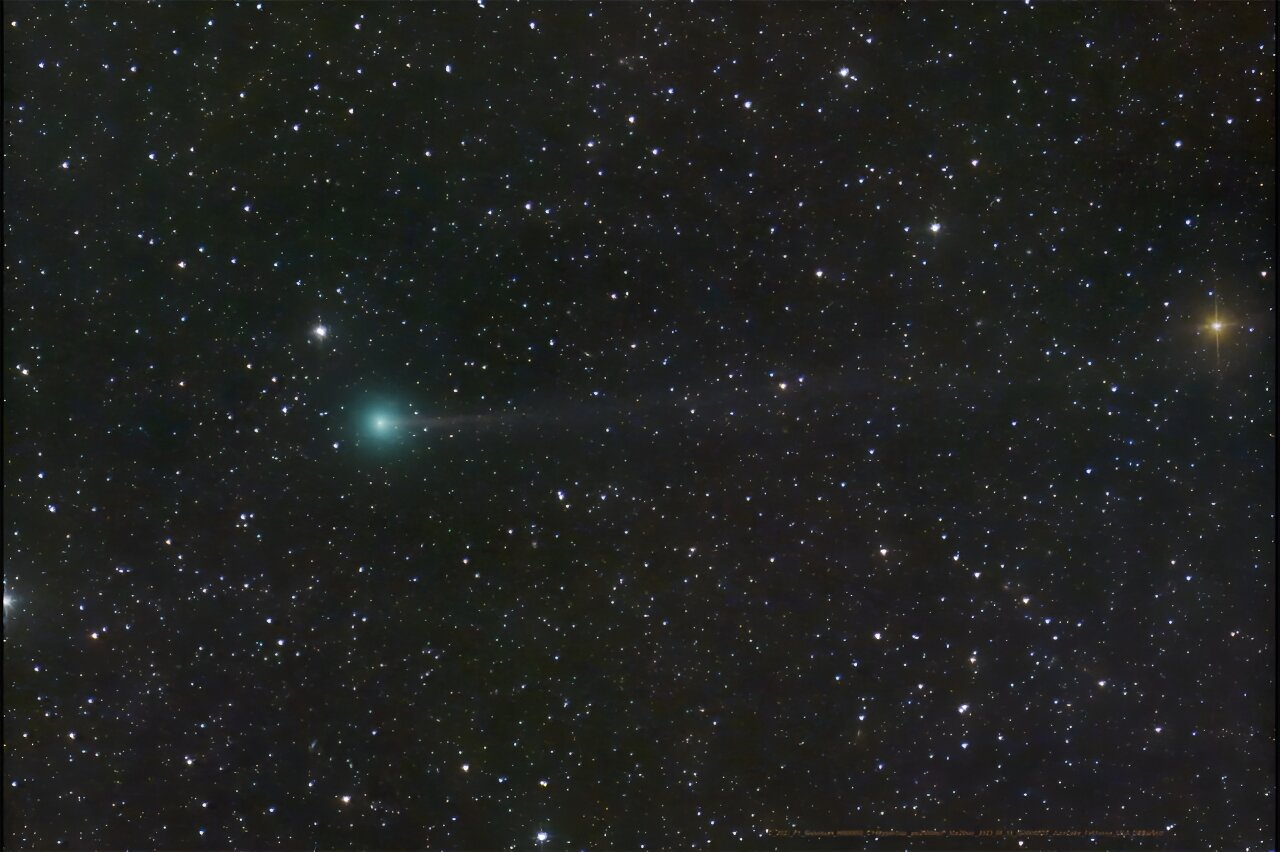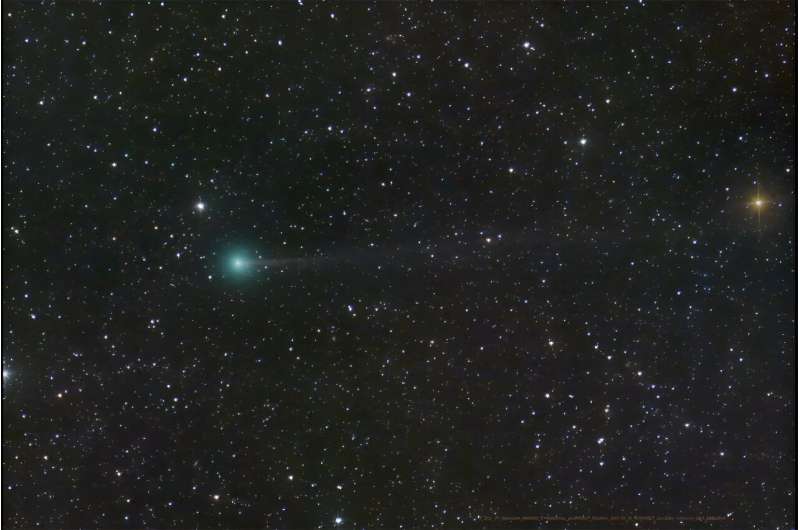

A comet is expected to risk having its tail clipped on Friday by flying perilously close to the sun, promising fireworks next month should it survive the fraught flypast.
Astronomers believe the Tsuchinshan-ATLAS comet has been hurtling headfirst through the void of space towards the center of the solar system for millions of years.
Named for the Chinese observatory and South African program which detected and confirmed its existence in 2023, the ball of rock and ice may have formed at a distance up to 400,000 times that between Earth and the sun, models suggest.
Up till now, you had to be in the southern hemisphere to hope to see it with the naked eye.
But on Friday evening it is projected to cross as close to the sun as it will get, before returning towards Earth.
From October 13 the comet will be visible in the northern hemisphere.
If the weather is right “it will jump to the eye” every night “in the direction of the setting sun”, astronomer Lucie Maquet at the Paris Observatory told AFP.
‘A brilliant comet’
But that forecast assumes the comet does not fly too close to the sun.
When comets approach our star, the melting ice contained at their core lets out a long trail of dust which reflects sunlight.
This characteristic tail is also the sign the comet is degassing. If the sun affects the comet too much, it risks disintegrating.
As the cluster of frozen water and rock “may not resist the force of the sun’s gravity”, a catastrophe “is always possible”, Maquet said.
The good news is that the comet, officially named “C/2023 A3” by scientists, seems to have a rather massive core.
So “there’s a good chance it will survive” its sunny pass-by, the astronomer said.
Initial forecasts predicting the comet would be especially bright as it visited our skies have since been revised down.
“But it will certainly be a brilliant comet,” Maquet said.
Unpredictable future
The comet’s future course is unpredictable.
Its solar sojourn will not be without consequences on its voyage, disturbed by the gravitational pull of the celestial objects it has crossed and by the weightloss inflicted by the sun’s harsh rays.
According to the models of The Paris Observatory’s Institute of Celestial Mechanics, it could be “ejected from the solar system and lost among the stars”.
All depends on the encounters the comet makes on its journey through the Oort cloud—a frigid belt of tiny objects theorized to exist at the far end of the solar system up to 3.2 light-years away—in a few thousand years’ time.
It would be enough, Maquet said, for the comet to pass by an object “that deflects it enough for a return trip to the solar system”.
© 2024 AFP
Citation:
Fireworks forecast if comet survives risky sun flypast (2024, September 28)
retrieved 28 September 2024
from https://phys.org/news/2024-09-fireworks-comet-survives-risky-sun.html
This document is subject to copyright. Apart from any fair dealing for the purpose of private study or research, no
part may be reproduced without the written permission. The content is provided for information purposes only.

